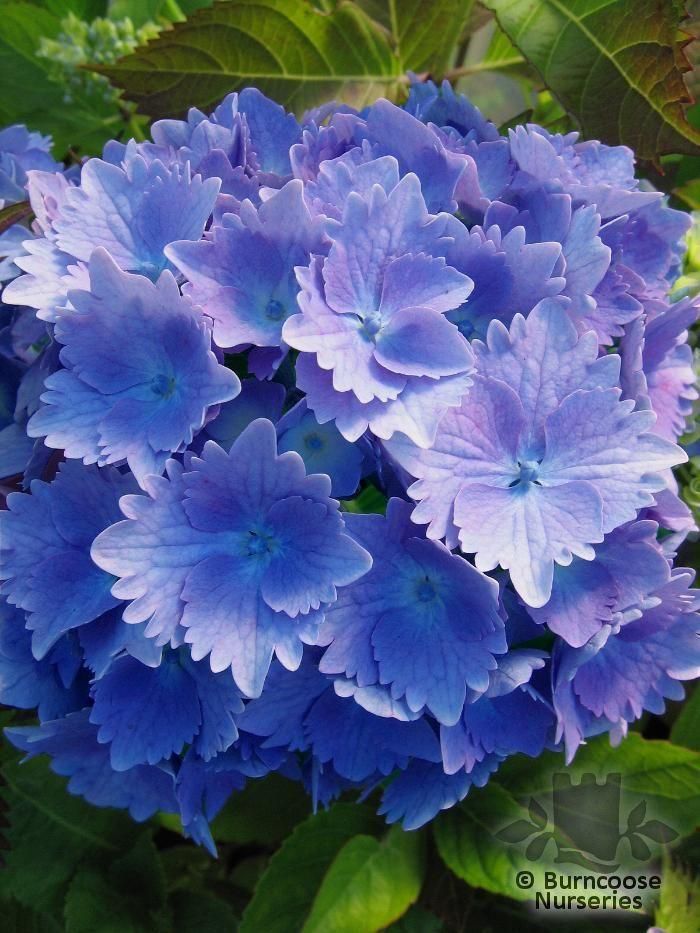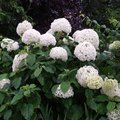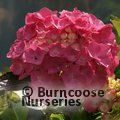HYDRANGEA

<





>
HYDRANGEA
Commonly known as Hortensia
All 2 year old plants. Hydrangeas flower pink or red on an alkaline (lime) soil. They flower blue or purple on an acid (peaty) soil. White varieties remain constant especially in semi-shade. We recommend the use of Hydrangea blueing agent for all blue varieties. Due to the difficulties of growing blue Hydrangeas in pots, the first flush of flowers may flower pink. All Flower JUL-OCT.
Colour-changing mopheads and lacecaps in shades of pink, white and blue from early summer to late autumn and delicate skeletons of flower through the winter.
Cones of white from paniculata and bronze and purple foliage from quercifolia.
Genus of 80 or more species of deciduous and evergreen shrubs and climbers. They originate from woodland in eastern Asia and North and South America.
The larger, showier flowers on flat, domed or conical flower heads are sterile, the smaller, fertile flowers are usually found in the centre. The climbers are suitable for a shady wall or fence and mature specimens provide shelter for insects.
Paniculata species attract insects as they have fertile flowers amongst the sterile ones.
Full Plant Details - Sun/Soil & other attributes
-
Floweringlocal_floristJanlocal_floristFeblocal_floristMarlocal_floristAprlocal_floristMaylocal_floristJunlocal_floristJullocal_floristAuglocal_floristSeplocal_floristOctlocal_floristNovlocal_floristDec
-
 Pests & Diseases
Aphids, red spider mites, scale insects, vine weevils, capsid bugs, grey mould (Botrytis), hydrangea virus, powdery mildew, leaf spot, honey fungus
Pests & Diseases
Aphids, red spider mites, scale insects, vine weevils, capsid bugs, grey mould (Botrytis), hydrangea virus, powdery mildew, leaf spot, honey fungus -
 Place of origin
Chile, Argentina
Place of origin
Chile, Argentina -
Hydrangeas
-
EvergreenLeathery, dark green leaves to 15cm (6in) long, sharply toothed on young plants
-
 Cream
Creamy white
Cream
Creamy white -
Frost hardy (down to -5)
-
 Entire
Entire
-
 Serrate
Serrate
-
 Elliptic
Elliptic
-
 Height
5m (16ft)
Height
5m (16ft) -
 Spread
5m (16ft)
Spread
5m (16ft) -
ClimberSome of these climbing plants will need trellis or wire supports if grown on walls or fences. Other grow aerial roots and are self-clingingVigorous, woody climber, clinging by aerial roots. Produces flowerheads to 15cm (6in) across with predominantly fertile flowers from large, spherical buds
-
 Pruning group 1
Suitable for: Deciduous and evergreen trees, and some deciduous shrubs.
Pruning group 1
Suitable for: Deciduous and evergreen trees, and some deciduous shrubs.
Pruning: Minimal pruning required. Prune wayward or crossing branches to maintain a healthy framework.
When: When dormant in the late winter/early spring. Some in the summer/autumn to prevent bleeding of sap.
-
 Hardy - average winter
Hardy through most of the UK apart from inland valleys, at altitude and central/northerly locations. May suffer foliage damage and stem dieback in harsh winters in cold gardens. Plant can withstand temperatures down to -10°C (14°F)
Hardy - average winter
Hardy through most of the UK apart from inland valleys, at altitude and central/northerly locations. May suffer foliage damage and stem dieback in harsh winters in cold gardens. Plant can withstand temperatures down to -10°C (14°F) -
Summer Seasonal Interest
-
Fertile moist well-drained soilModerately fertile. Humus-rich
-
 Full sun
Shelter from cold, drying winds
Full sun
Shelter from cold, drying winds -
 Partial shade
Partial shade
-
 may cause skin allergy
(People & Pets) Maybe harmful to pets if eaten
may cause skin allergy
(People & Pets) Maybe harmful to pets if eaten -
Rabbit Resistant
View Planting Tips and Care Advice
Hydrangeas - Care Guide
- Hydrangeas for everyone!
- Quick tour of hydrangea stocked - Video Tip ondemand_video
- Soil & Feeding
- Pruning Hydrangeas
- Pruning Hydrangeas - Video Tip ondemand_video
- Hydrangeas, keeping them blue - Video Tip ondemand_video
- Propagation
- Drying Flower Heads
- Drying hydrangea flower heads - Video Tip ondemand_video
- Popular Mopheads & Lacecaps
- Hydrangeas and other plants
- Further Reading
Hydrangeas - Video Spotlights
- Five varieties of Hydrangea - Video Tip ondemand_video
- Hydrangeas in July - Video Tip ondemand_video
- 7 Varieties of Hydrangea paniculata in August - Video Tip ondemand_video
- Hydrangea 'Lanarth White' - Video Tip ondemand_video
- Hydrangea serrata - Video Tip ondemand_video
- Hydrangea seemanii - Video Tip ondemand_video
- Hydrangea aspera subsp robusta - Video Tip ondemand_video
- June Hydrangea Stock 2022 - Video Tip ondemand_video
View Planting Combinations







